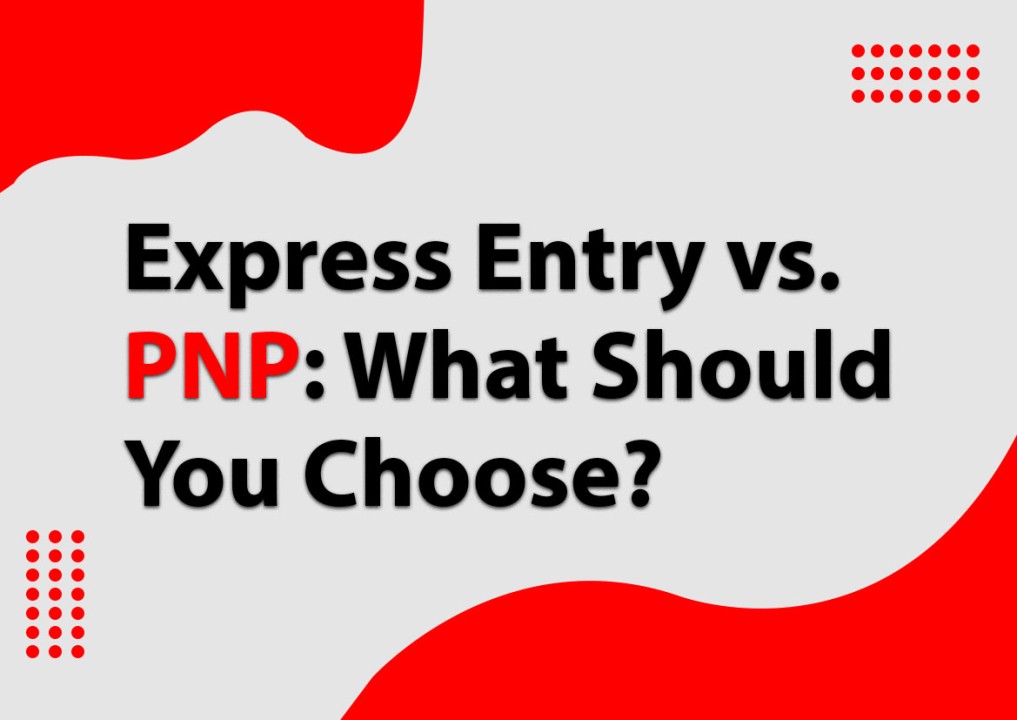Express Entry vs PNP: Which one should I apply to?
Immigration programs controlled by the Express Entry system and Canada’s Provincial Nominee Programs (PNPs) are the two most common avenues for new permanent residents to enter Canada each year, according to Immigration Refugees and Citizenship Canada.
In 2024, these two pathways will account for 220,770 new immigrants, out of the 485,000 that the country would accept.
Many people wishing to move to Canada may have a basic question: should I apply through the Express Entry program or the Base PNP? Both paths have their own advantages. Continue reading to understand more about decision-making, the differences between base and enhanced PNPs, and other topics.
What is Express Entry?
One of Canada’s primary avenues for economic immigrants is through the Express Entry application management system.
Express Entry manages the intake for three immigration programs:
- The Federal Skilled Worker Program (FSWP);
- The Federal Skilled Trades Program (FSTP); and
- The Canadian Experience Class (CEC).
By 2024, Express Entry is predicted to be the most popular method for entrants entering the nation. Canada intends to accept 110,700 permanent citizens through these schemes.
All three of these programs have separate eligibility requirements, at least one of which must be completed before an applicant may submit a profile to the Express Entry pool of qualified candidates. When a person is eligible and uploads his or her profile through one of the Express Entry programs, they are officially an Express Entry applicant with a profile in the system.
When a profile is uploaded to the Express Entry pool, all candidates receive Comprehensive Ranking System (CRS) ratings based on their human capital, job experience, and other attributes.
Candidates must now wait for an Express Entry draw (either a program-specific or a general draw) with a minimum CRS score that corresponds to their CRS score before receiving an initiate to apply (ITA) for permanent residence. An Express Entry profile is valid for one year following successful submission, and candidates can resubmit their profile after it expires.
After receiving an ITA, candidates become applicants and must submit an application to IRCC for PR within 60 days of being invited. If this application is approved, immigrants will be awarded permanent residence in Canada, allowing them to live and remain there. To learn more about Express Entry, visit our dedicated website.
Canadian provinces may also invite applicants from the Federal Express Entry pool of qualified individuals. This can happen through expanded Provincial Nominee Program (PNP) streams. Express Entry-aligned streams vary from solo or Base PNP streams.
To be nominated under an enhanced stream, persons must be invited from the Federal Express Entry pool or the provincial/territorial pool of qualified applicants to submit an enhanced PNP application to the province or territory. Candidates that gain a provincial nomination earn an additional 600 CRS points, enhancing their chances of winning an ITA from the federal government.
What are the Base Provincial Nominee Programs (PNPs)?
Base PNPs are streams that are not Express Entry-aligned and are managed by the province or territory government. These streams must be applied for independently, with their own qualifying conditions (more on this later).
Base Provincial Nominee Programs (or simply Base PNPs) were initially established to assist provinces and territories in responding more directly to local demographic and labour market challenges by allowing provincial and territorial governments to nominate qualified newcomers to settle and live in their jurisdiction.
Every province and territory in Canada (excluding Quebec, which has its own specialty immigration programs, and Nunavut) operates its own PNP. Eligibility varies depending on the program applied to, but it typically requires having resided, studied, or worked within a province, working in an in-demand profession or having secured employment within the province, and/or possessing human capital factors that a province considers beneficial to the local economy.
This year, PNPs are Canada’s second largest immigrant stream, with the goal of spreading the advantages of immigration across the country. Though not as significant as Express Entry in 2024 (in terms of newcomer intake), PNPs are expected to surpass all other immigration channels in 2025 and 2026, becoming Canada’s largest avenue for receiving immigrants.



